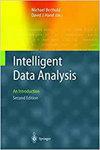Feature evolvable learning with image streams
IF 0.8
4区 计算机科学
Q4 COMPUTER SCIENCE, ARTIFICIAL INTELLIGENCE
引用次数: 0
Abstract
Feature Evolvable Stream Learning (FESL) has received extensive attentions during the past few years where old features could vanish and new features could appear when learning with streaming data. Existing FESL algorithms are mainly designed for simple datasets with low-dimension features, nevertheless they are ineffective to deal with complex streams such as image sequences. Such crux lies in two facts: (1) the shallow model, which is supported to be feasible for the low-dimension streams, fails to reveal the complex nonlinear patterns of images, and (2) the linear mapping used to recover the vanished features from the new ones is inadequate to reconstruct the old features of image streams. In response, this paper explores a new online learning paradigm: Feature Evolvable Learning with Image Streams (FELIS) which attempts to make the online learners less restrictive and more applicable. In particular, we present a novel ensemble residual network (ERN), in which the prediction is weighted combination of classifiers learnt by the feature representations from several residual blocks, such that the learning is able to start with a shallow network that enjoys fast convergence, and then gradually switch to a deeper model when more data has been received to learn more complex hypotheses. Moreover, we amend the first residual block of ERN as an autoencoder, and then proposed a latent representation mapping (LRM) approach to exploit the relationship between the previous and current feature space of the image streams via minimizing the discrepancy of the latent representations from the two different feature spaces. We carried out experiments on both virtual and real scenarios over large-scale images, and the experimental results demonstrate the effectiveness of the proposed method.图像流特征可进化学习
特征可进化流学习(Feature Evolvable Stream Learning, FESL)在过去的几年中受到了广泛的关注,在使用流数据进行学习时,旧的特征可能会消失,而新的特征可能会出现。现有的FESL算法主要针对具有低维特征的简单数据集,但对于图像序列等复杂数据流的处理效果较差。其关键在于:(1)浅层模型虽然被认为对低维流是可行的,但无法揭示图像复杂的非线性模式;(2)用于从新特征中恢复消失特征的线性映射不足以重建图像流的旧特征。为此,本文探索了一种新的在线学习范式:图像流特征进化学习(FELIS),它试图使在线学习者的限制更少,更适用。特别是,我们提出了一种新的集成残差网络(ERN),其中预测是由来自多个残差块的特征表示学习到的分类器的加权组合,使得学习能够从具有快速收敛的浅网络开始,然后当接收到更多数据时逐渐切换到更深的模型以学习更复杂的假设。此外,我们将神经网络的第一个残差块修正为自编码器,然后提出了一种潜在表示映射(LRM)方法,通过最小化两个不同特征空间的潜在表示的差异来利用图像流的先前和当前特征空间之间的关系。我们在虚拟和真实场景下对大规模图像进行了实验,实验结果证明了该方法的有效性。
本文章由计算机程序翻译,如有差异,请以英文原文为准。
求助全文
约1分钟内获得全文
求助全文
来源期刊

Intelligent Data Analysis
工程技术-计算机:人工智能
CiteScore
2.20
自引率
5.90%
发文量
85
审稿时长
3.3 months
期刊介绍:
Intelligent Data Analysis provides a forum for the examination of issues related to the research and applications of Artificial Intelligence techniques in data analysis across a variety of disciplines. These techniques include (but are not limited to): all areas of data visualization, data pre-processing (fusion, editing, transformation, filtering, sampling), data engineering, database mining techniques, tools and applications, use of domain knowledge in data analysis, big data applications, evolutionary algorithms, machine learning, neural nets, fuzzy logic, statistical pattern recognition, knowledge filtering, and post-processing. In particular, papers are preferred that discuss development of new AI related data analysis architectures, methodologies, and techniques and their applications to various domains.
 求助内容:
求助内容: 应助结果提醒方式:
应助结果提醒方式:


